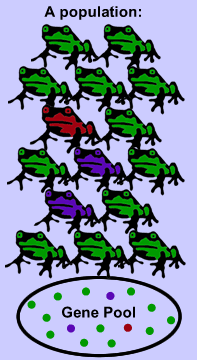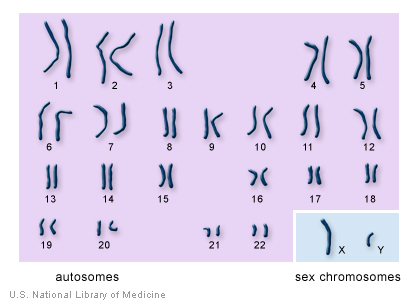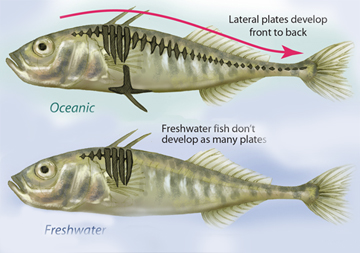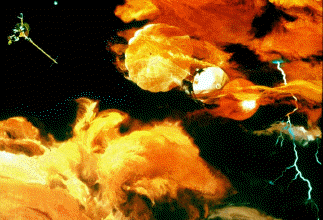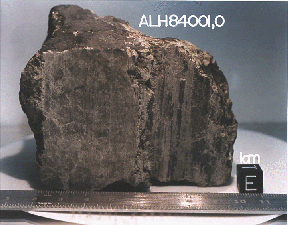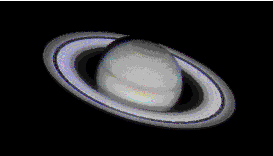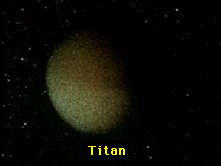Click on image for full size
Windows to the Universe original image
Related links:
Evolution Hits the Beach - streaming RealVideo (1 min. 7 sec.) from NSF
Genetics of Self-Sacrifice - streaming RealVideo (1 min. 19 sec.) from NSF
Changing Planet: Changing Mosquito Genes Classroom Activity and Video
Changes to the Gene Pool: Microevolution
See all the frogs in the picture at the left? Let's pretend that they are all the same species and live in the same area so they are one population. Even though all the frogs are the same species, they do not all look the exactly the same. What's different about some of the frogs? Color!
All of the versions of the genes in a population of a species are together called the gene pool. All of the genes for color that are found in the population are part of the gene pool. Colors that are very common, like green, are very common in the gene pool. The genes for less common colors are less common in the gene pool.
The gene pool does not always stay the same. Over generations, small changes in the amount of each type of gene can happen for a number of reasons.
- Genes can mutate if something odd happens when cells divide. This can create a new type of gene. Perhaps this is now the gene for purple frogs was developed. The new purple gene is a small part of the gene pool.
- If a bunch of red frogs move into the area, it would add more red genes into the gene pool. This would make more red frogs in the next generation.
- If the red and purple frogs decided to more elsewhere, they would form a new gene pool that didn't have any green in it. And, the gene pool they came from would have only green in it.
- If these frogs live in an area with red rocks, the red frogs would be camouflaged and easily able to avoid predators. Red frogs would be more likely to survive and reproduce, making more red frogs. This would increase the amount of red genes in the gene pool.
Changes in the gene pool of a population over time that result in changes to the varieties of individuals in a population are called microevolution. Examples of microevolution include bacteria that have become unaffected by antibiotics, or a change in a species' coloring or size. If the changes are over a very long time and are large enough that the population is no longer able to breed with other populations, it is considered a different species. This is called macroevolution.


